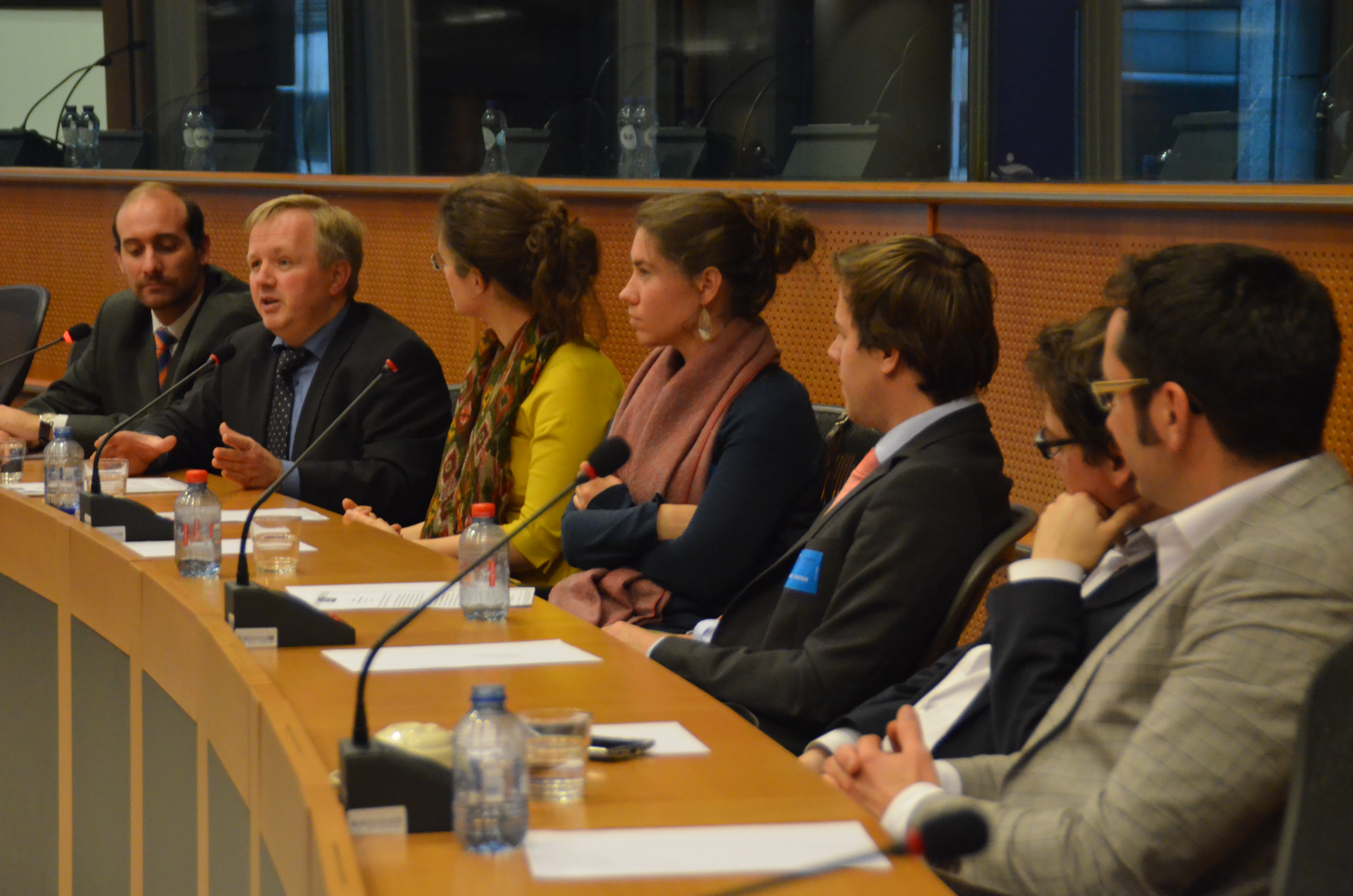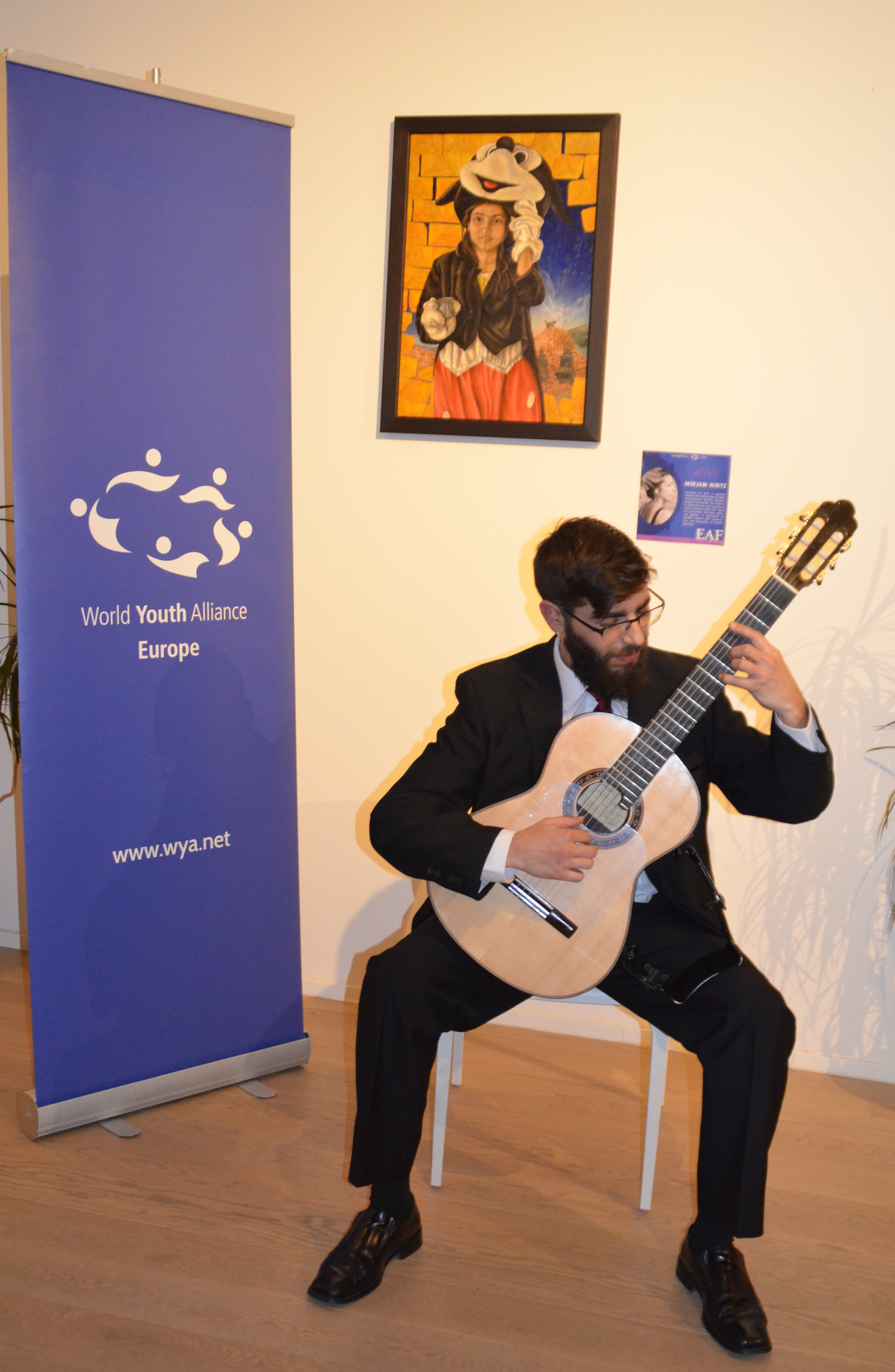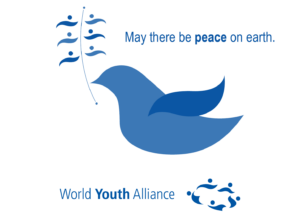During the first edition of the European Arts Forum held in Brussels last November 2015, 40 young artists and art-lovers as well as scholars, European decision-makers and cultural associations representatives from around Europe gathered together to examine the relationship between art and the human condition. We had the great joy to welcome Mafalda Pereira da Cunha who took us in the profoundness of Beauty. We are happy to share with you her intervention on “What is Beauty? Does Beauty matters? Should art always be beautiful?”
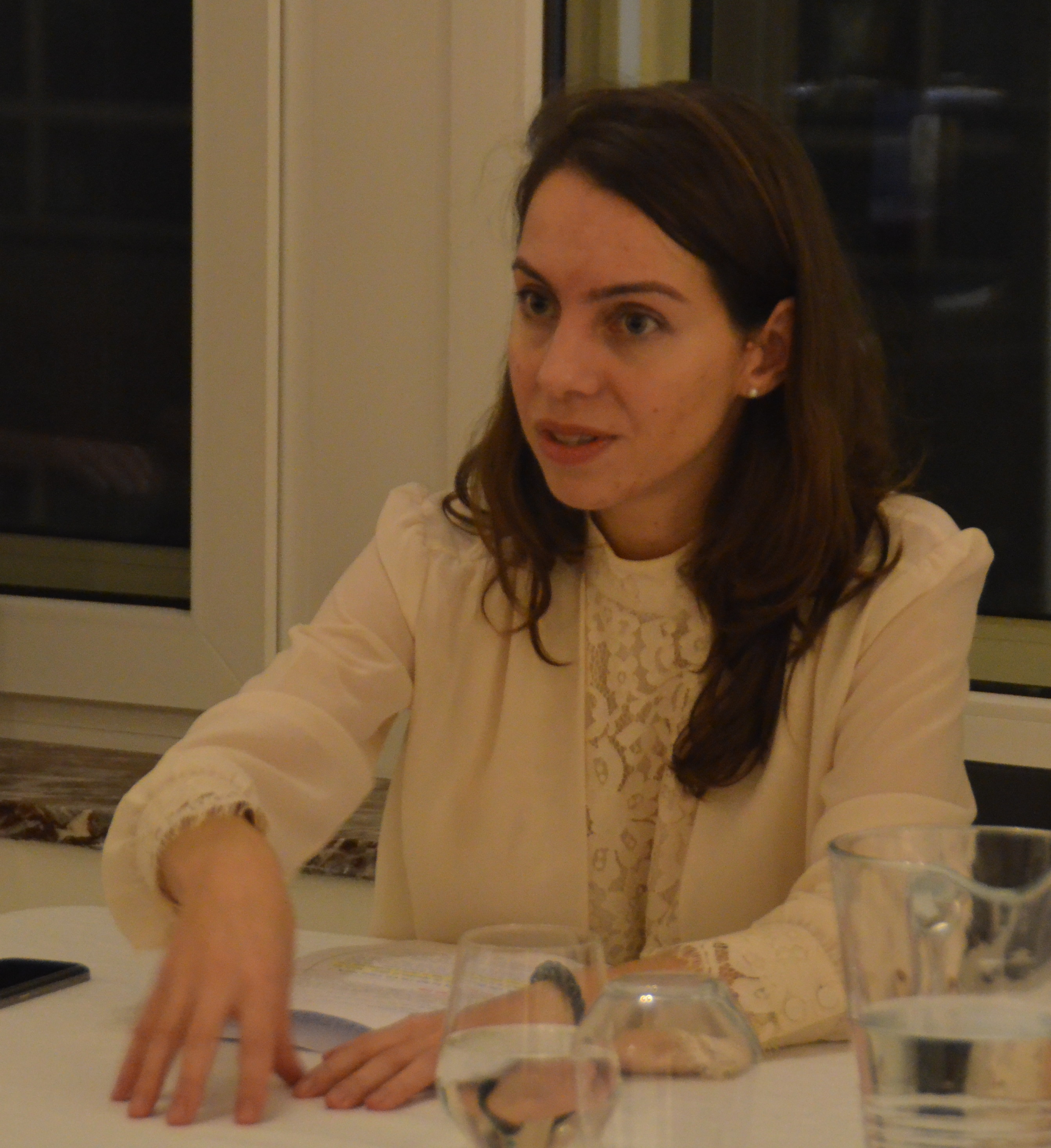 I’m here to talk to you about something dear to my heart and that is beauty. I am so grateful for WYA’s invitation and to be in this event with you. Thank you. Yet, before starting, let me just say that beauty is such a vast, and amazing topic that we can only do so much within a limited time frame. So, bearing this in mind, I hope to give you a taste for various thoughts on beauty, which cannot stand alone but may stimulate future productive discussions.
I’m here to talk to you about something dear to my heart and that is beauty. I am so grateful for WYA’s invitation and to be in this event with you. Thank you. Yet, before starting, let me just say that beauty is such a vast, and amazing topic that we can only do so much within a limited time frame. So, bearing this in mind, I hope to give you a taste for various thoughts on beauty, which cannot stand alone but may stimulate future productive discussions.
For many centuries, beauty was something which made the perceiver of a beautiful thing, object, situation or person to experience the vulnerability that makes us human and that connects us to each other. What is more, beauty was considered important and powerful; it was connected with metaphysical absolutes such as with truth and goodness, and it would not be thought of apart from them. But then, in the twentieth century, beauty was rejected and apparently thrown into oblivion – particularly after the horrors of the World Wars.
Why is that? Is it because we think of beauty differently as probably a historicist would claim? Well, based on considerable research, and focusing on Elaine Scarry’s contribution, I would like to start by highlighting the underlying motives for our difference in considering beauty today. These are, for the most part, due to two political claims made against beauty but also to other claims, non-political, like the sublime. Due to time restrictions, I will focus on the political allegations and the sublime will be, perhaps, the subject for a future talk. The first political claim against beauty is that beauty distracts us from other pressing business, more urgent issues needed to improve our lives both at a personal and collective levels. The second political claim, extremely embedded in our milieu, asserts that beauty reifies the object of our gaze.
The World Youth Alliance has asked me to talk about questions such as “what is beauty?” “What is the role of beauty in art?” and “Should art always be beautiful”? Well, these are very broad questions and each could easily became the topic for a PhD thesis. So, without further delay, let us begin.
What is beauty? Is it a universal or is it in the eye of the beholder?
Despite the subjectivism dominating contemporary society, there are still some renowned authors who maintain that in beauty there is objective value. These authors are Denis Dutton (1944-2010), Arthur Danto (1924-2013), and Roger Scruton b.1944). They are all philosophers, the two first American, and Scruton British.
Denis Dutton
Denis Dutton developed a Darwinian theory of beauty. According to this theory, ‘the experience of beauty is one of the ways that evolution has of arousing and sustaining interest […] in order to encourage us towards making the most adaptive decisions for survival and reproduction.’ [1] As an example of natural beauty which seems to appeal to every human being, no matter our geographical provenance, he speaks of the savannah landscape. Dutton states that this landscape is where we have evolved and points out that it shows up today everywhere: in posters, calendars, chocolate boxes, etc. To illustrate artistic beauty, which more frequently than not is deemed the result of a cultural conditioning, Dutton offers us the pear-shaped “hand-axes” associated with early humans, first found in France (Acheul, an area close to Amiens in Picardy). Dutton argues that their sheer numbers show they cannot have been made solely for butchering animals. Moreover, the fact that many of these hand axes are too big for butchery and many others show no evidence of wear and tear on their delicate blade edges, seems to suggest that they served other function. Dutton’s belief is that these artefacts are, in reality, the earliest known works of art. Why? Because they were transformed from practical tools into what Darwinians call “fitness signals”’. These “fitness signals”, Dutton explains, work like the peacock’s tail’, displaying to potential mates desirable personal qualities, which in the case of the homo erectus or homo ergaster would be signs of ‘intelligence, planning ability, access to rare materials [and] fine motor control’.[2] After Homo Erectus came Homo Sapiens and Dutton says that they clearly found new ways to amaze each other: perhaps by telling jokes or dancing, through hair styling, storytelling etc. But what he highlights is the fact that for us moderns, the element that has continued to matter is this aspect of how impressed we are by the skill of creating, doing something extraordinary (“virtuoso technique”). He jestingly tells us that the next time we pass by a window of a jewellery shop displaying a beautiful cut pear drop shape stone, we should not be so sure that it is only culture telling us that that sparking jewel is beautiful –because the reality is that our forebears also loved that shape which is the shape of the Acheulean hand axes; and found beauty in the skill needed to make it. So concluding, he asks: ‘Is beauty in the eye of the beholder? No!’ he exclaims. Not at all! It is rather deeply present in our minds, and I quote ‘a gift handed down from the intelligent skills and rich emotional lives of our ancestors.’ The objectivity in the idea of beauty as explained by Dutton’s Darwinian approach, is therefore met in the appreciation every human being has in skilled performances. I consider the point made by Dutton very important. However, contrarily to Darwin’s theory of pre-Homo Sapiens who were solely concerned with practical problems, human nature today is in fact able to reason with absolutes and morality. So, assuming that human being is more than an exceptional form of a primate, we can say that there are more features in the objectivity of beauty than its relevance in the natural selection process.
Thus, this fact leads us to other authors, like Roger Scruton who considers human beings as essentially symbolizing beings; makers and readers of signs.
So looking at Scruton’s contribution:
In his book Beauty and film Why Beauty Matters, both released to the public in 2009, Roger Scruton, maintained that a kind of objective value is found in beauty. This happens because, as Kant had already shown in the onset of the nineteenth century, beauty is a value rooted in our rational nature, consequently playing a central role in shaping the human world.
This view then, is in line with what WYA’s stated in its “Declaration on Beauty in Art and Human Dignity” and I quote: art enables us to ‘shape, trough imagination the world in which we live’. This is indeed one of the many roles that beauty may play in art. But there are others.
Returning to Scruton: Following Kant, Scruton asserts that there is an objective value in beauty but he also tells us that, contrarily to what happens with morality and science, objectivity in beauty is not generally the search for universal valid results. Instead, it focuses on, and I quote, ‘valid and heightened forms of human experiences’ that allow human beings to develop to their full potential.[3] Therefore, the objective value of beauty is met in the link of beauty with goodness. The search for this value seems to be the identification of what makes a certain vision of human life (portrayed by X artwork) capable of raising up one’s being, and it always depends on personal experience. Scruton goes on to argue that the art critic is in a privilege position since he or she is someone who after experiencing art is able to show others how beauty in that artwork points out for virtues vital for the good conduct of life. The critic communicates this perception to others in a way that they begin to see it as well, and so a consensus is reached. Hence, following Sruton’s reasoning, beauty is objective through what in its form (appearance) links to the good.
Now: it is important to note that, and I quote ‘the status of beauty as an ultimate value is questionable’.[4] The reason for this uncertainty lies in what Thomas of Aquinas asserted in the thirteenth century, namely that beauty can link with the idea of truth or with falsity. In each case, the end result will be different: If it links with falsity, the result is destruction, oppression and it casts a spell over whoever comes across it. On the contrary, if beauty links with truth it has the capacity to set the individual free for action, the result being creation of any kind, and freedom.
Beauty, I dare to say, is at odds with contemporaneity because of its association with goodness which, after the Enlightenment project failed, proved false.
The American cultural historian Frederic Spotts has written a remarkable book about this, entitled Hitler and the Power of Aesthetics (c.2001). This study clearly shows the role that art (and especially a manipulated understanding of classical artistic beauty) played in WWII. The Führer’s approach to art and beauty was retrograde. Hitler detested Weimar art and modern painting in general because he saw it as responsible for the destruction and betrayal of national values. Hence, he equated it with Jewishness.
Being well aware of the power of art, Hitler purged Germany of “degenerate” – that is to say, modern art. From his perspective, culture was the means both to achieve and to maintain an Aryan superstate. Nazi aesthetic included the traditional media of painting, sculpture and architecture, but went further into ‘Nazi pageantry and regalia, films and political choreography, architecture and, without too much of a stretch, even the so-called “theatres” of war and mass murder, as well.’ But what I would like us to remember from this is that Hitler did not create new art or a new aesthetics. Just as before Hitler’s rise to power, love of nature and the simple live already existed, so too there was a classical ideal of beauty and of aesthetics. In fact, what he did was to manipulate traditional ideas of equity, justice and peace (and obviously beauty) in the great cultural Renaissance of an idealised new Germany. Therefore, “new” art (that is, propaganda art) presented a distorted notion of beauty, one that erased its vital aspect of communion and replaced it with oppression, in the attempt to create a racial utopia.
The level of atrocity that human beings showed capable of during Hitler’s era, resulted in Adorno’s famous dictum ‘to write poetry after Auschwitz is barbaric.’[5] However, we should not take this statement out of context, since Adorno also wrote: ‘To put a complete ban on the concept of beauty would be as damaging for aesthetics as would the removal of the concept psyche from psychology or that of society from sociology.’[6] The point is that beauty can either lead to freedom or to oppression. And this takes us to Arthur’s Danto’s argument according to whom beauty is not part of the definition of art. Danto is the most influential and polemic of contemporary analytic aestheticians, yet his contribution on beauty is surprisingly very traditional.
Arthur Danto
Duchamp’s ready-mades (1913-15) and what Danto calls “the intractable avant-garde” constituted, according to this author, ‘an immense philosophical step forward’ insofar as it made evident to all that the perception of artistic goodness is not identical with the perception of beauty.
Here is a quote by Max Ernst (1891-1976), a German artist writing after the First World War: “To us, Dada was above all a moral reaction. Our rage aimed at total subversion. A horrible futile war had robbed us of five years of our existence. We had experienced the collapse – into ridicule and shame – of everything represented to us as just, true, and beautiful. My works of that period were not meant to attract, but to make people scream.’[7]
I personally think that when Danto says that beauty is not part of the definition of art, that he is referring to retinal beauty, to use Duchamp’s expression.
Thinking about beauty outside the art world though, Danto holds a completely different opinion. He writes: Beauty ‘is not an option for life. It is a necessary condition for life as we would want to live it.’[8] And like Dutton and Scruton, Danto asserts that beauty is a universal value. But he adds a really interesting point: calling upon a poet who wrote that beauty is “a mangled sodden thing”, Danto differentiates the idea of beauty from the fact of beauty.[9] Whereas it is impossible to work with the idea of beauty, the fact of beauty corresponds to those values and circumstances that guarantee human happiness and make life meaningful.
In explaining the difference Danto demonstrates the universality of the fact of beauty. He first refers to a scientific study which confirmed that the average idea of human beauty rests in regularity and symmetry. The point he is making is that ‘beauty is universal [even] without corresponding to reality.’[10]
Then, he revisits George Edward Moore’s tale of the two worlds: the beautiful and the horrible world and he concludes: ‘choosing which of these conditions is preferable [that is, living in the beautiful world or in the horrible world] is not a matter of taste! Offered a choice, everyone would chose paradise over jungle hell. Beauty may indeed be subjective, but it is universal as Kant insisted.’[11]
So like Scruton, Danto links the objectivity of beauty to the association of this value with that of goodness and justice.
So, on the one hand, beauty is a fundamental, universal value for humanity, hence extremely important for our wellbeing at all levels. But on the other hand, beauty in art has been distorted, manipulated and its association with the notion of goodness has been completely destroyed, especially when at the service of politics (communism and fascism). While propaganda, artistic beauty has reified both the perceiver and the object of contemplation. Being mindful of the history of the idea of beauty, should we (or shouldn’t we) fight for the return of the beautiful in the practice of art and in history of art?
I say YES though never forgetting that beauty and falsity can easily work together at the service of terror and oppression.
So, with this in mind I say, again, YES TO BEAUTY! Yes, to the return of the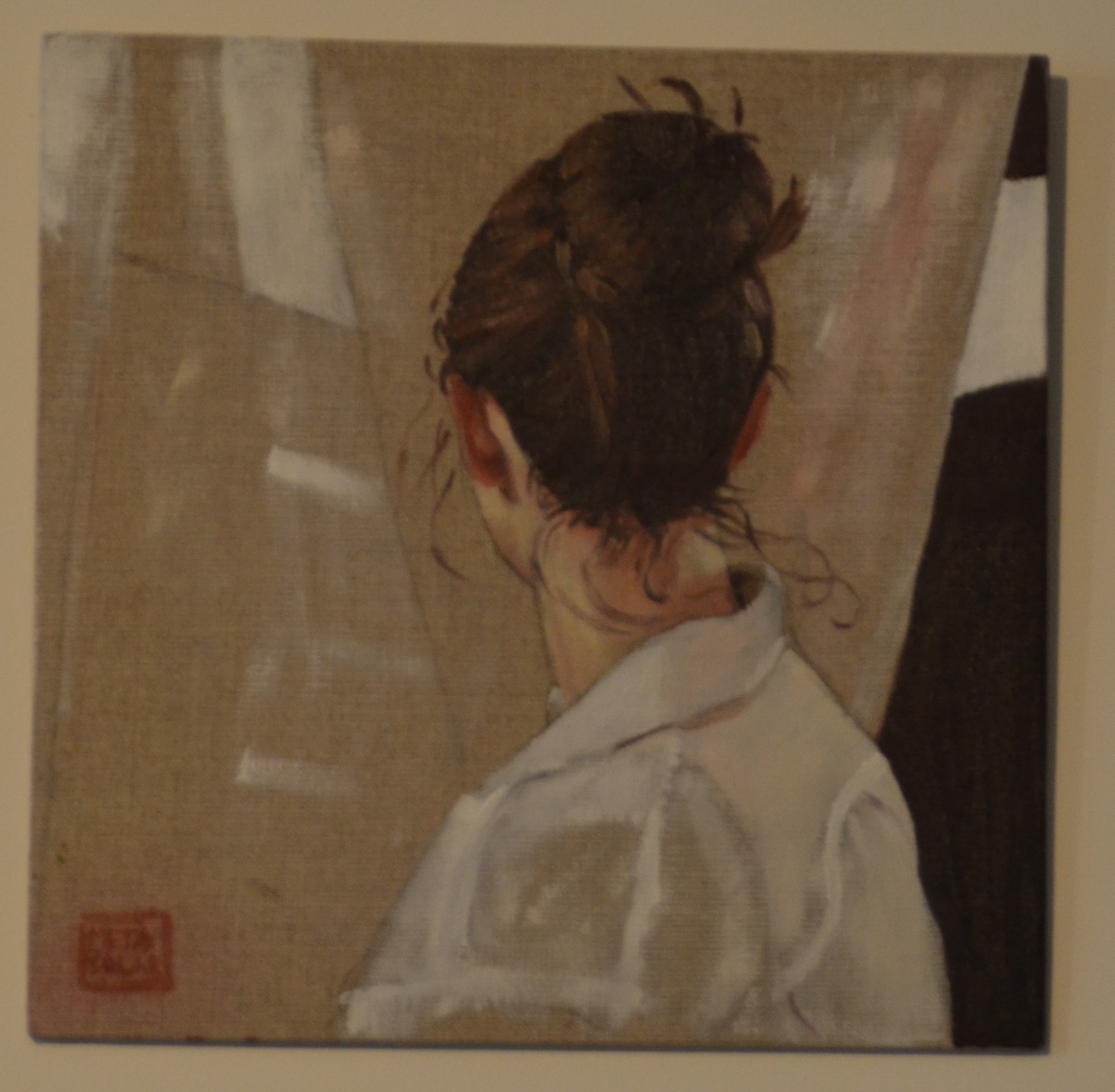 beautiful to the visual arts through the new media and technologies that we now have available (without forgetting traditional media obviously). YES to beauty’s return in glory because as Elaine Scarry brilliantly demonstrated in her book On Beauty and Being Just (1999), beauty begets beauty, it opens us to welcome the Other (with a capital O) and far from distracting us from what’s wrong in the world, it helps justice because it makes us value and care for what we see. Indeed, despite ethics and aesthetics being different realms, they coexist in the human person and so they come together through the exercise of freedom of action, a capacity to choose which allows us to determine which kind of world we want to live in.
beautiful to the visual arts through the new media and technologies that we now have available (without forgetting traditional media obviously). YES to beauty’s return in glory because as Elaine Scarry brilliantly demonstrated in her book On Beauty and Being Just (1999), beauty begets beauty, it opens us to welcome the Other (with a capital O) and far from distracting us from what’s wrong in the world, it helps justice because it makes us value and care for what we see. Indeed, despite ethics and aesthetics being different realms, they coexist in the human person and so they come together through the exercise of freedom of action, a capacity to choose which allows us to determine which kind of world we want to live in.
(Painting: Meta Solar, EAF artist)
So without falling prey to the creation of a false homogenous identity that disregards the multiplicity of nature and otherness (Adorno’s admonition), let us embrace beauty. After so many years of social criticism, let us consider beauty in art as an analogy of justice, which in the words of John Rawls (1921-2002) is a “symmetry of everyone’s relation to each other.”
And to get inspiration, without spending too much time with arduous reading, I suggest you watch some of the Ted talks on the importance of beauty – mainly the one by the American artist Theaster Gates “How to revive a neighbourhood with imagination beauty and art”, the one by the designer Richard Seymour “How Beauty Feels” and the one by the writer and cultural critic Virginia Postrel, entitled “on Glamour”. This last presentation is quite interesting bearing in mind that contrarily to what Nietzsche argued, beauty is not false, what is false is glamour.
We have gone through this quickly, in order to see some of the bigger issues and get some idea of the different ways one could go on thinking about beauty in relation to art and theory today. It is my hope that we will return to these points – expand on them and create new ones – throughout our lives. Please know that if I can help you with that, I will be here. Thank you.
And thank you WYA, once again, for this wonderful opportunity. May you host many more events that seek to promote human dignity through the Arts! Thank you.
Written by Mafalda Pereira da Cunha, WYA Europe Consultant for Culture.
[1] Dutton, Denis (Contributor) (February 2010). Denis Dutton: A Darwinian theory of beauty. TED. Video on TED.com. Retrieved
[2] Id, ibid.
[3] Roger Scruton, Beauty p.142
[4] Scruton, Beauty, p. 3
[5] The entire passage, belonging to the essay entitled “Cultural Criticism and Society” (1949) reads: ‘The more total society becomes, the greater the reification of the mind and the more paradoxical its effort to escape reification on its own. Even the most extreme consciousness of doom threatens to degenerate into idle chatter. Cultural criticism finds itself faced with the final stage of the dialectic of culture and barbarism. To write poetry after Auschwitz is barbaric. And this corrodes even the knowledge of why it has become impossible to write poetry today. Absolute reification, which presupposed intellectual progress as one of its elements, is now preparing to absorb the mind entirely. Critical intelligence cannot be equal to this challenge as long as it confines itself to self-satisfied contemplation.’ (Prisms, 34) The translation is by Samuel and Shierry Weber. See more about this issue in Elaine Martin’s article, “Re-reading Adorno: The ‘after-Auschwitz’ Aporia” and also in http://mindfulpleasures.blogspot.co.uk/2011/03/poetry-after-auschwitz-what-adorno.html
[6] Adorno, Theodor. “On the concept of the Beautiful//1970.” Beauty. Ed. Dave Beech. London; Cambridge: Whitechapel Gallery; MIT, 2009. 78-81. Print; 78
[7] Danto, C. Arthur. The Abuse of Beauty Aesthetics and the Concept of Art. Paul Carus Lectures 21. Illinois: Open Court, 2003. Print. 48-9.
[8] Danto, ibid., 160.
[9] Danto, ibid., 29.
[10] Danto, ibid., 74.
[11] Danto, ibid., 33.

